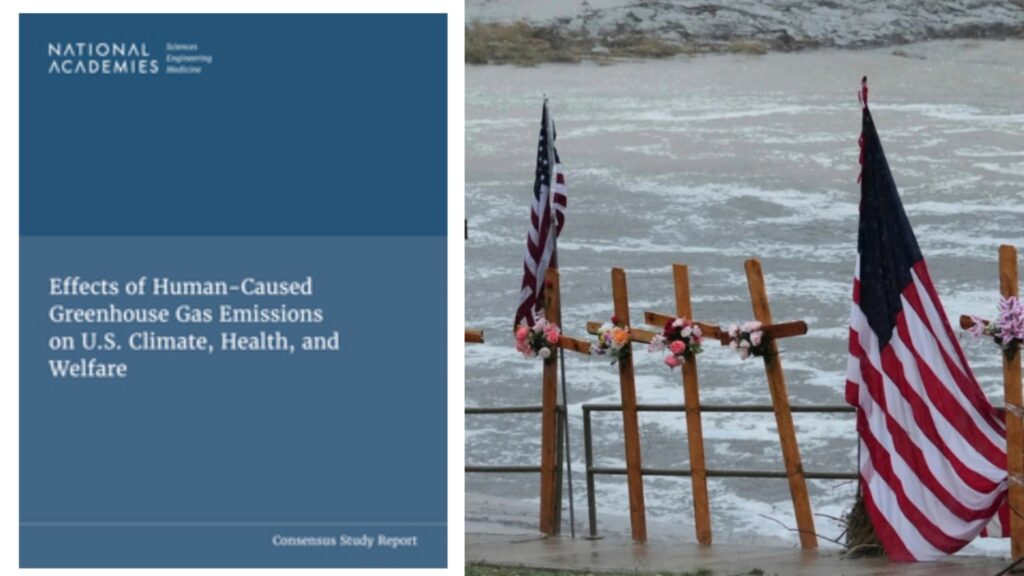ENB Pub Note: We will cover this on the Energy News Beat podcast, Daily Show, and this article came from Doug Sheridan on LinkedIn. I want to add that it seems like, while the Government is shut down, the clouds have changed, and people are noticing a lot less of the funny-looking contrails that linger and blossom into weird clouds. Traveling between homes, one can see the difference, and patterns matter. The following picture is in West Texas, and notice the beautiful sky, with no lingering clouds. With the renewable energy market largely based on the Obama-era EPA regulations, this has impacted energy prices for consumers in an increasingly negative manner.
Steven Koonin writes in the WSJ, the The National Academies of Sciences, Engineering, and Medicine recently issued a report on the effect of GHG emissions. It depicts dire consequences for the nation’s climate, health and welfare.
The study—put together in less than two months—was obviously meant to bolster the scientific basis for the US Environmental Protection Agency (EPA)‘s 2009 finding that GHG emissions threaten the nation’s well-being. It plays down or ignores any evidence undermining that conclusion.
This agenda is evident from the first sentence, which invokes the terrible flood of the Guadalupe River in Texas in July. The report doesn’t mention that similar events have been recorded since the late 19th century and show no detectable trend to the present, even as emissions have soared.
Assessments of climate science often minimize, or even ignore, natural variability to make recent climate trends or weather events seem unusual and hence a consequence of greenhouse-gas emissions.
The Academies’ report is no exception. It describes a recent acceleration of global sea-level rise observed by satellites without mentioning a comparable acceleration during the 1930s.
There are similar failures in the report’s coverage of US heat waves—which aren’t more common in recent decades than they were in the decades around 1900. And North Atlantic hurricanes show no long-term trends in frequency or intensity.
The report deceptively shapes its discussion of models used to project climate changes, gushing about how the models are improving. But it give no quantitative sense of how deficient even the improved models are.
It also omits some important but inconvenient topics. Readers won’t learn of humans’ demonstrated ability to adapt and reduce vulnerability to a changing climate, or of the projected minimal net effect of warming on the US economy.
Bottom Line 1: The incomplete and biased picture of climate science in the National Academies’ study does a disservice to the public. Flawed pronouncements that support advocacy by minimizing or ignoring scientific disagreements feed public distrust.
Botyom Line 2: Complete and transparent analyses of the risks of climate change are overdue. Sadly, the Academies’ report isn’t that. The gov’t would do well to stop funding their climate studies until they get their house in order.
Our Take 1: It’s telling that the Academies’ report cites the Texas floods—arguably the result of poor state governance—even as it fails to mention two North Atlantic hurricane seasons in a row that have produced storm landfalls far below historical averages inconsistent with increasing chances of Hurricanes smashing into US shores due to climate change.
Our Take 2: We, like Koonin, seriously doubt the Texas floods are as statistically significant climate events as is the mild hurricane activity of the last few years. But that’s not scary, so it’s ignored.
Have you calculated your Tax Burden in 2025?
Crude Oil, LNG, Jet Fuel price quote
ENB Top News
ENB
Energy Dashboard
ENB Podcast
ENB Substack

